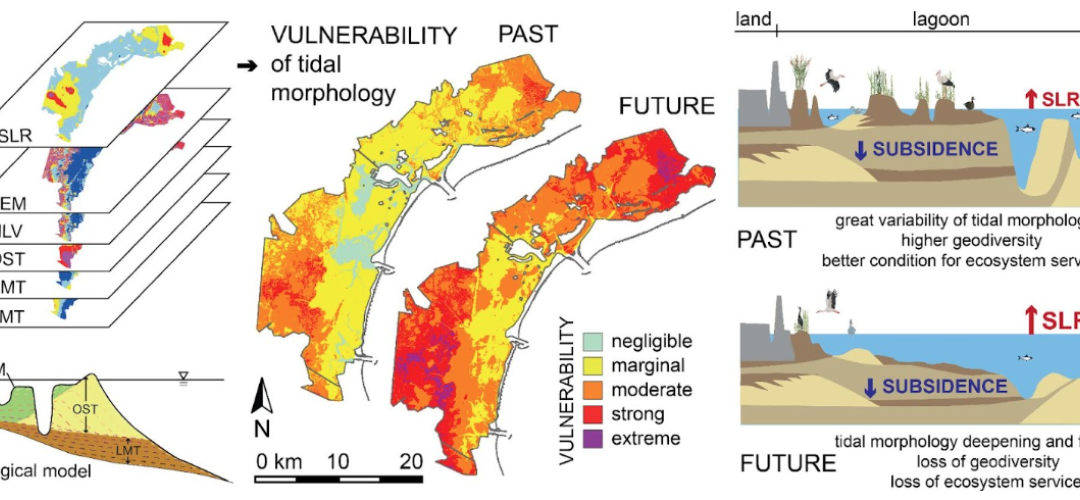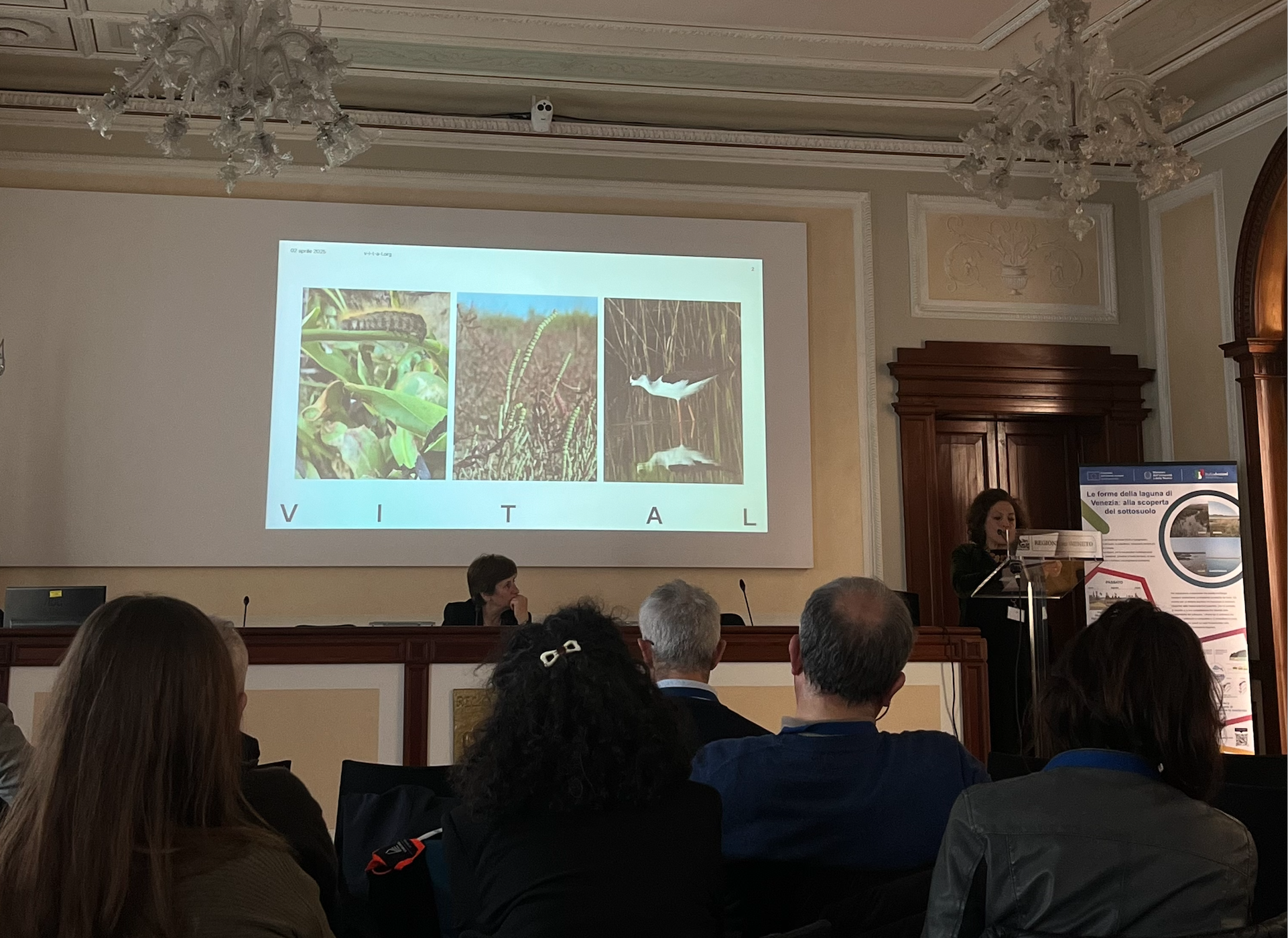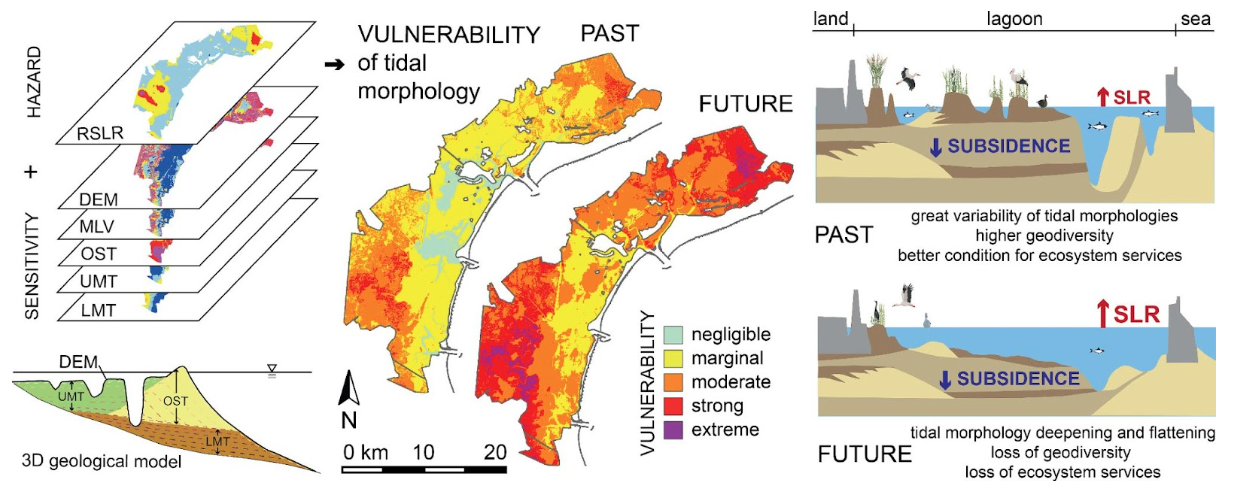The Resilience of the Venice Lagoon Between Climate Change and Innovation
The Resilience of the Venice Lagoon Between Climate Change and Innovation

On April 2nd, We are here Venice (WahV) took part in the workshop organized by the Institute of Geosciences and Earth Resources of the CNR and the University of Padua, within the framework of RESTORE—a project funded by the National Recovery and Resilience Plan (PNRR) and coordinated by the ICEA Department of the University of Padua. In the presence of numerous key figures in scientific research and land management in the Veneto region, WahV presented the first results of the Vital project, highlighting the critical potential of salt marsh regeneration as a pivotal factor in preserving the lagoon’s ecological balance.

The way we consider the lagoon’s vulnerability has shifted significantly over time: while in the past the focus was primarily on city flooding, today attention is increasingly directed at lagoon morphologies (animals, plants, and microorganisms). These are under growing threat from erosive forces driven by wind and waves, sediment deficits, land subsidence, and climate change.
The RESTORE project tackles these challenges by reconstructing the complex Holocene stratigraphy [1] of the entire lagoon in three dimensions, using cutting-edge technologies to precisely describe the heterogeneity of the subsurface. At the same time, 3D numerical models are being developed to simulate the evolution of salt marshes and the broader lagoon system under different future scenarios, taking into account variables such as sea-level rise, temperature change, and other stressors. The project also aims to quantify both past and projected subsidence [2], as well as future sea-level rise, to better understand temporal dynamics and assess the relative vulnerability of different morphologies. Finally, it examines the susceptibility of lagoon morphologies to relative sea-level rise, integrating risk analysis with sensitivity assessments to pinpoint the most exposed and fragile areas. Figure 1 (Tosi et al., 2024 [3]), proposes a graphical representation of this approach, showing, in the centre, the vulnerability maps, past and future, obtained by combining the sensitivity maps and the relative sea level rise (RSLR) map, on the left. The latter is the combined subsidence and sea-rise resulting from climate change as shown in the rightmost portion of the figure.

During the workshop, researchers from the University of Padua presented projections from the IPCC (SSP) [4] regarding the impact of global climate change on Venice. In an optimistic scenario with low greenhouse gas emissions (SSP1-2.6, achieving climate neutrality by 2050), global sea levels are projected to rise by 4 to 6 mm per year, reaching an increase of approximately 70 cm by 2100. Conversely, under the worst-case scenario (SSP5-8.5—“business as usual” with no major emission cuts), annual sea-level rise would exceed 10 mm, with a total increase surpassing 120 cm by the end of the century.
In subsidence-prone areas like the Venice Lagoon, these effects are further amplified: the relative sea level rises even faster as the land sinks. This significantly increases the risk of coastal erosion and flooding, as inundation becomes more frequent and water flows with greater energy. Historical data paint a troubling picture: the average annual sea-level rise rate went from 1.4 mm (1901–1990) to 3.6–4 mm in the 2005–2025 period. Over the last 38 years, lagoon monitoring stations have recorded an average rise of 5.1 mm/year, with local variations ranging from 2.8 mm to 6.9 mm.
Historical data on Venice show a worrying trend due to the combined effect of subsidence and the average rise in sea level.
Dr. Angela Aldrigo from the Tide Forecasting Centre (Centro Maree) of the City of Venice shared recorded data: since 2020, the Mo.S.E. barrier system has been raised 102 times to counter high tides, as per the activation plan for events exceeding 110 cm. Nonetheless, the frequency of such events is rising: from 24 occurrences between 2009 and 2013 to an average of 12 per year in recent years, marking a 140% increase. Even with Mo.S.E. in operation, a 110 cm tide would still flood approximately 12% of the historic city, underscoring Venice’s persistent vulnerability.
Currently, sea-level rise in the lagoon is estimated at about 3.5 mm/year, with an additional 1.5 mm/year of subsidence. This means that Venice is effectively losing 5 mm of elevation annually relative to sea level. With forecasts predicting a rise between 24 and 32 cm by 2050, extreme events like the November 2019 flood may become increasingly common—signaling a new “normal” for the city and its delicate lagoon ecosystem [5].
With forecasts indicating an increase of between 24 and 32 cm by 2050, extreme events such as the November 2019 flood could become a new “normality” for the city and its lagoon ecosystem.
In this evolving and complex scenario, restoring lagoon morphologies—especially salt marshes—emerges as a tangible and viable strategy for adapting to climate change. These interventions not only help mitigate the effects of sea-level rise and biodiversity loss but also offer an opportunity to safeguard a unique biotope that embodies the ecological and cultural identity of the Venice Lagoon. During the era of the Serenissima Republic, Venetian citizens took responsibility for the care and preservation of this landscape, recognizing its strategic and symbolic value. Continuing this legacy today means not only protecting an environmental heritage but also renewing a deeply rooted tradition of resilience in the city’s history.
Footnotes:
[1]Holocene stratigraphy refers to the study of deposits and geological events that occurred during the Holocene, the current geological period, which began about 11,700 years ago.
[2]Subsidence is defined as any movement of vertical lowering of the earth's surface, regardless of the cause that produced it. Lowering of the ground can be related to natural causes, such as tectonic processes, isostatic movements and chemical-physical transformations (diagenesis) of sediments due to lithostatic loading or groundwater level fluctuation. Furthermore, some aspects of anthropic activity can considerably influence the phenomenon or even determine its triggering (ISPRA, site access 23.04.2025)
[3]Tosi, L.; Da Lio, C.; Cosma, M.; Donnici, S.; Vulnerability of tidal morphologies to relative sea-level rise in the Venice Lagoon, Science of The Total Environment, Volume 931, 2024, 173006, ISSN 0048-9697.
[4]Shared Socioeconomic Pathways (SSP) are scenarios developed by the Intergovernmental Panel on Climate Change (IPCC) to describe different possible futures in relation to greenhouse gas emissions and climate impacts. Each scenario combines socioeconomic trajectories with different levels of mitigation.
SSP1-2.6: represents a sustainable development scenario with strong climate policies and a goal of carbon neutrality by 2050. It envisages a containment of global temperature rise below 2°C and moderate sea level rise.
SSP5-8.5: Known as the “business as usual” scenario, it assumes a world that continues to rely heavily on fossil fuels, without significant emission reduction policies. It is the scenario with the greatest climate impacts, including a sharp rise in temperatures and significant sea-level rise.
These scenarios are fundamental tools for climate modelling and the planning of adaptation and mitigation strategies (IPCC Focal Point Italy, website access 23.04.2025).
[5]Cavaleri, L.; Bajo, M.; Barbariol, F.; Bastianini, M.; Benetazzo, A.; Bertotti, L.; Chiggiato, L.; Ferrarin, C.; Umgiesser, G.; Trincardi, F. The 2019 Flooding of Venice and Its Implications for Future Predictions. Oceanography 2020, 33, 42-49.
◾